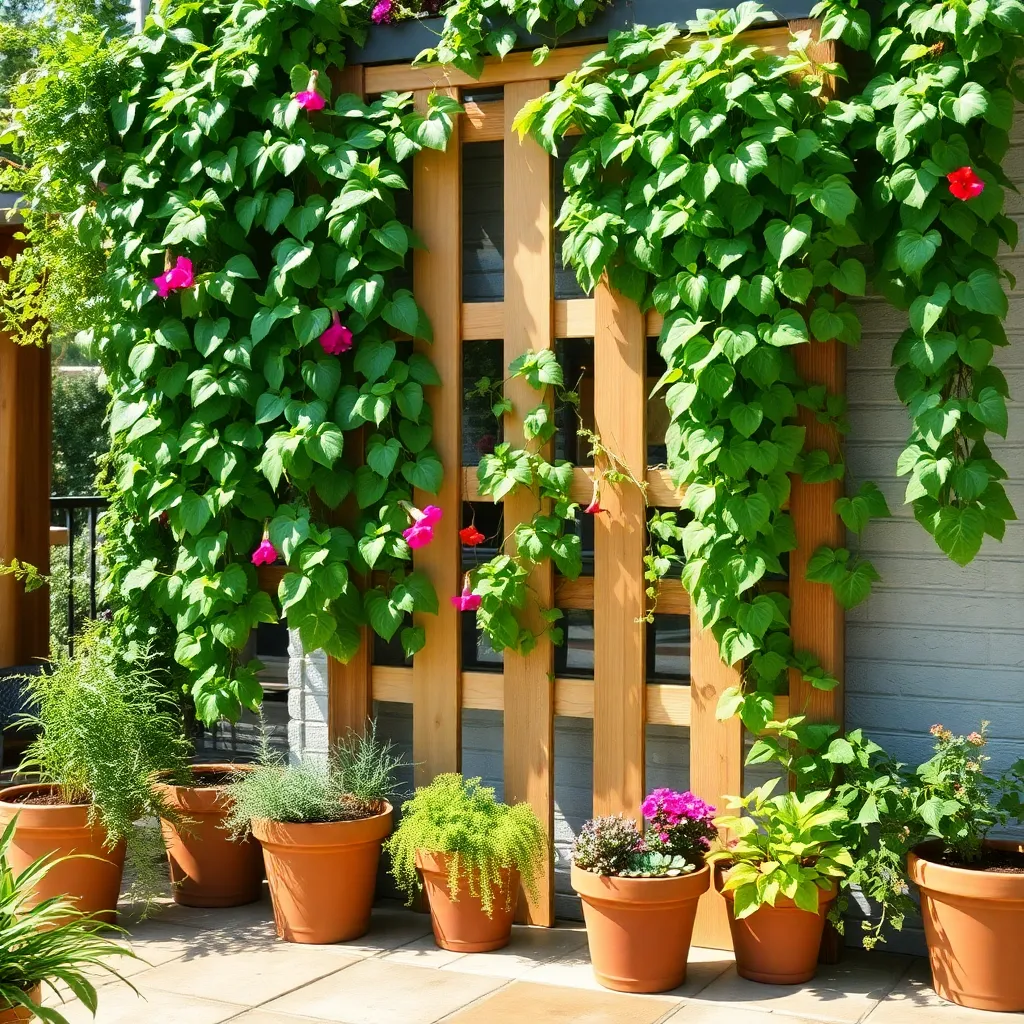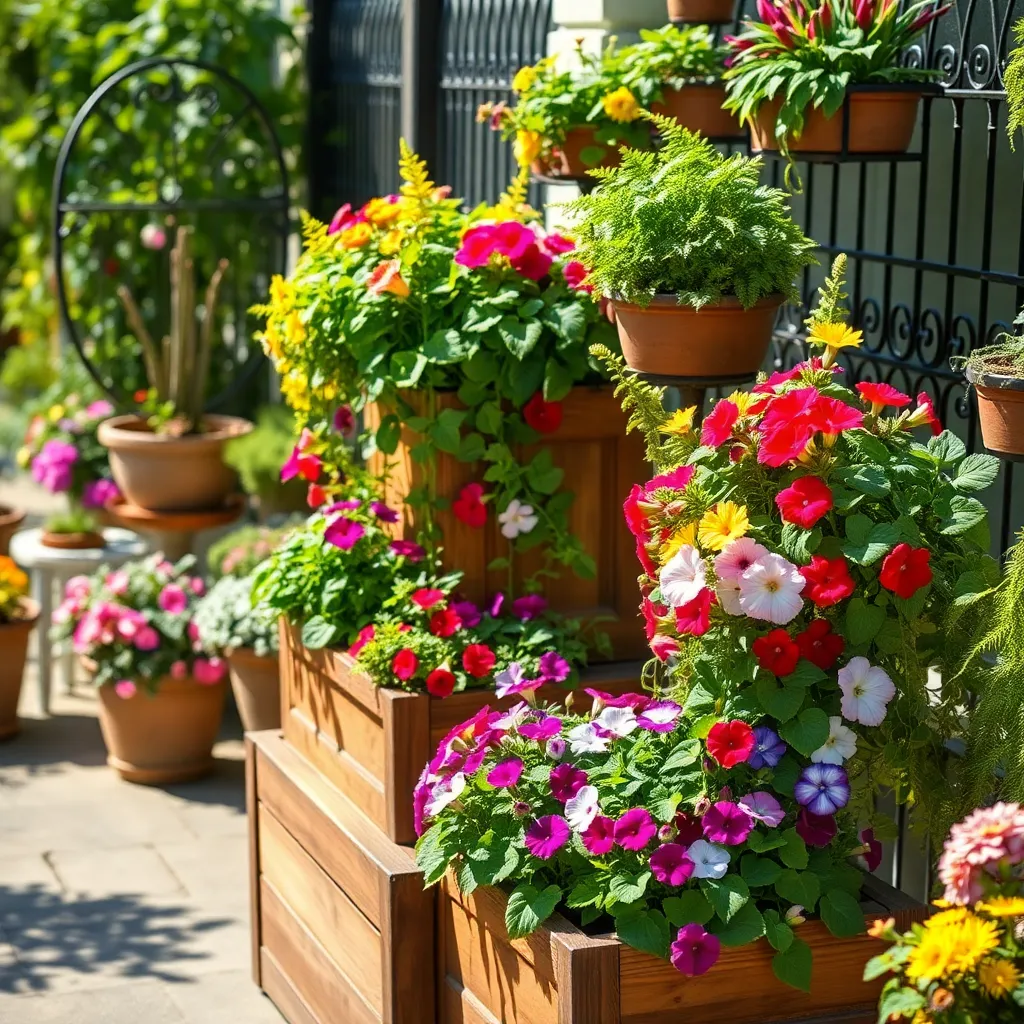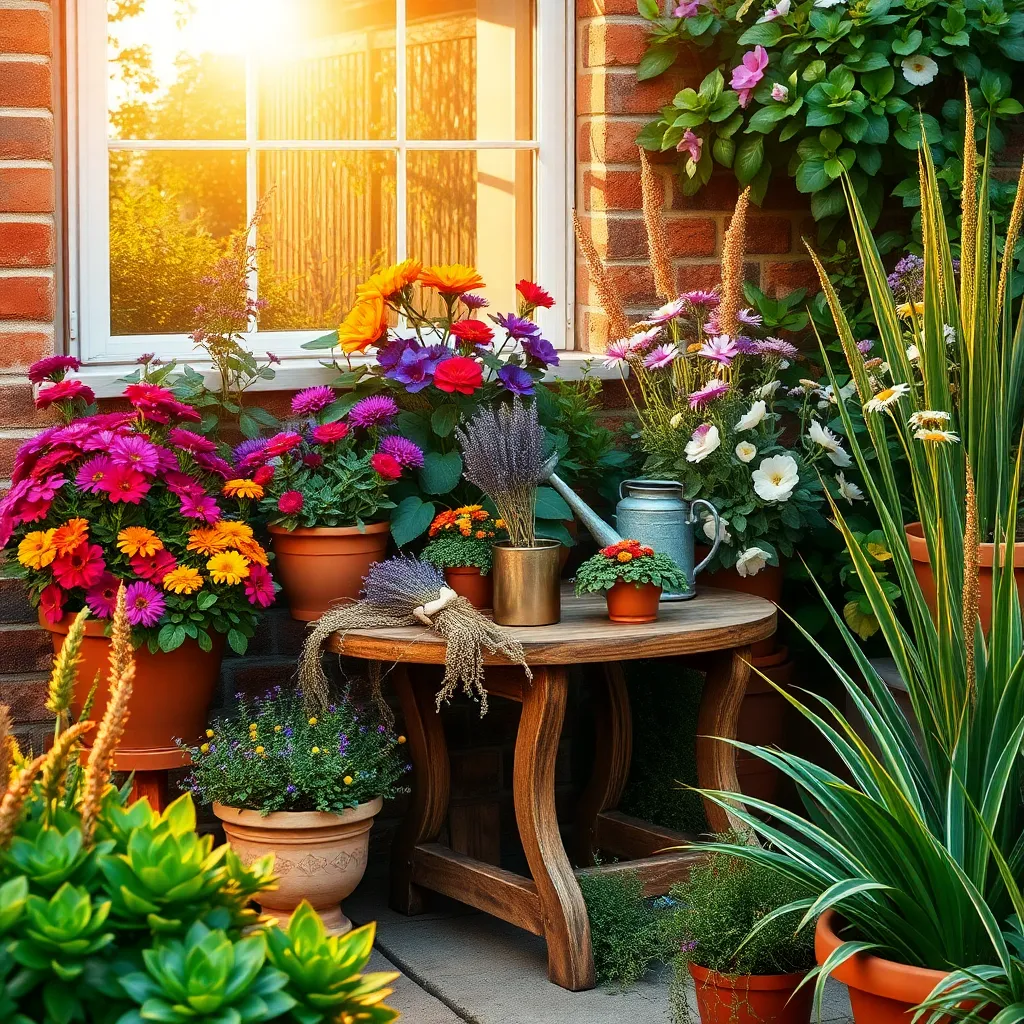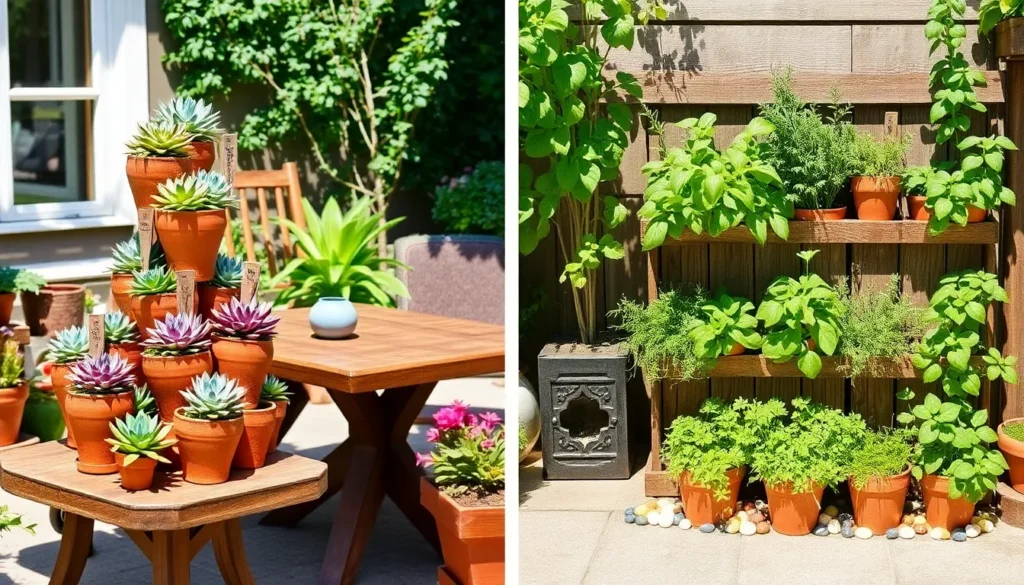Imagine stepping onto your patio and being greeted by a vibrant tapestry of colors, scents, and textures that transform your outdoor space into a personal sanctuary. Whether you’re a seasoned gardener with a green thumb or someone just dipping your toes into the world of horticulture, creating a patio garden can be a fulfilling and inspiring endeavor. This article is your guide to bringing such visions to life, offering a collection of inspiring ideas that cater to all levels of expertise and ambition.
Patio gardens are more than just aesthetic additions; they are microcosms of nature that can bring tranquility to your everyday life. By exploring these six common patio garden inspirations, you’ll discover how to harness the potential of small spaces, turning them into lush retreats that reflect your personal style. From vertical gardens that maximize limited areas to container gardening that adds versatility and charm, you’ll find practical insights tailored for both novices and expert gardeners alike.
Join us as we delve into a world of creativity and growth, where every patio has the potential to become a masterpiece. You’ll learn how to select the right plants, arrange them creatively, and maintain them with ease, ensuring your garden thrives throughout the seasons. Whether you’re looking to create a cozy nook for relaxation or a lively space for entertaining, these inspirations will equip you with the knowledge and confidence to cultivate your patio paradise.
Choosing Versatile Container Plants

When choosing versatile container plants for your patio, consider those that thrive in a variety of conditions. Succulents are an excellent choice for their ability to store water, requiring watering only every two weeks.
Herbs such as rosemary, basil, and thyme not only add greenery but are also practical for culinary use. Ensure these herbs are placed in a sunny spot, and water them when the top inch of soil feels dry.
For a splash of color, consider flowering plants like geraniums and petunias. These plants require regular deadheading to promote blooming and should be fertilized every month during the growing season.
Advanced gardeners might explore dwarf fruit trees like lemon or fig trees, which can be grown in large containers. These trees need a well-draining potting mix and regular pruning to maintain their shape and encourage fruit production.
Incorporating Vertical Garden Elements

Incorporating vertical garden elements can be a game-changer for small patio spaces. By utilizing walls, trellises, or even stacked containers, you can maximize your growing area without needing additional ground space.
Consider using vertical planters that can be mounted on walls or fences to cultivate herbs or small vegetables. These planters often come with built-in irrigation systems, making them a low-maintenance option for busy gardeners.
Climbing plants, such as clematis or morning glories, are excellent choices for adding height and color to your garden. Ensure they receive adequate sunlight—at least six hours a day—and use a well-draining soil mix to promote healthy growth.
For a more advanced project, create a living wall by securing a vertical frame filled with soil and planting pockets. This technique allows for a lush, green tapestry that can transform a bare wall into a vibrant focal point.
Regular maintenance, such as pruning and feeding, is essential to keep your vertical garden thriving. Use a balanced liquid fertilizer every two to four weeks during the growing season to encourage robust plant development.
Creating a Tranquil Water Feature

Integrating a water feature into your patio garden can transform the space into a serene retreat. Start by choosing a suitable location, ideally one with partial shade to prevent excessive algae growth and to keep the water cool.
Consider installing a small, self-contained fountain or pond that suits your garden size and style. Ensure the base is level and stable, which will prevent leaks and maintain an even water flow.
For those new to water features, a solar-powered fountain can be both eco-friendly and easy to maintain. Regularly check the pump for debris and ensure the water level remains consistent to avoid pump damage.
Advanced gardeners might opt for a feature with aquatic plants such as water lilies or lotus, which add both beauty and biological filtration. These plants require at least six hours of sunlight and a water depth of 12 to 18 inches for optimal growth.
To enhance the tranquility, surround the water feature with moisture-loving plants like hostas and ferns. Mulching around the plants will help retain soil moisture and suppress weeds, keeping your garden looking neat and lush.
Maximizing Space with Tiered Planters

Tiered planters are a fantastic way to maximize space on your patio, especially if you’re working with limited square footage. By layering plants vertically, you can create an eye-catching display that also makes efficient use of your area.
Consider using a mix of herbs, flowers, and small vegetables in your tiered planter to enjoy both beauty and utility. Choose plants with similar light and water requirements to ensure they thrive together in shared space.
To get started, select a durable container system that can withstand the elements and provide adequate drainage. When filling your planters, use premium potting soil for optimal nutrient retention and aeration, ensuring robust plant growth.
Watering needs will vary depending on the plants you choose, but generally, tiered planters dry out more quickly due to increased exposure to air. Water deeply but less frequently to promote strong root systems, and always check the soil moisture before watering to avoid over-saturation.
- Tip for Beginners: Start with hardy plants like succulents or herbs, which are more forgiving and require less maintenance.
- Advanced Tip: Experiment with companion planting to enhance growth and deter pests naturally.
Enhancing Ambiance with Lighting

Lighting can transform your patio garden into a magical retreat by enhancing its ambiance. Consider using solar-powered lights for an eco-friendly solution that charges during the day and casts a warm glow at night.
Strategically placed lights can highlight key features of your garden, such as a beautiful plant or a unique sculpture. Use uplighting techniques to accentuate taller plants or trees, creating dramatic shadows and depth.
Pathway lights not only provide safety but also guide the eye through your garden, creating a sense of journey. Choose low-voltage options to keep energy consumption low while still achieving a striking effect.
For a cozy atmosphere, string lights can be draped across pergolas or branches to mimic starlit skies. Ensure they are weather-resistant to withstand outdoor conditions and maintain durability year-round.
Seasonal Décor and Plant Selection

To seamlessly incorporate seasonal décor into your patio garden, start by selecting plants that naturally reflect the colors and themes of the current season. In spring, opt for vibrant tulips and daffodils, while autumn might call for the warm hues of chrysanthemums and ornamental kale.
Understanding the specific growing conditions for each season will ensure your plants thrive. For instance, spring bulbs require well-draining soil and a location with full sun to partial shade, whereas autumn plants often benefit from richer soil with ample organic matter.
Consider incorporating seasonal planters and containers to easily swap plants as the seasons change. Choose containers with good drainage and use a high-quality potting mix to support root health and robust growth.
Advanced gardeners might experiment with layering bulbs in one planter for a continuous bloom effect through spring. Begin with larger bulbs like tulips at the bottom, followed by smaller bulbs such as crocuses closer to the surface.
Conclusion: Growing Success with These Plants
In exploring the ‘6 Common Patio Garden Inspirations,’ we’ve drawn parallels between cultivating a thriving garden and nurturing successful relationships. First, we discussed the importance of creating a strong foundation, akin to preparing soil, to ensure stability and growth. Next, we emphasized the need for regular care and attention, much like watering plants, to keep the relationship vibrant. Third, we highlighted the value of diversity, suggesting that embracing differences can enhance the richness of your bond. Fourth, pruning and addressing issues promptly were likened to maintaining a healthy garden. Fifth, we explored the idea of providing space, allowing your partner to grow individually. Finally, we celebrated the importance of seasonal adaptability, encouraging flexibility with changing circumstances.
As a next step, take a moment today to identify one area in your relationship that could benefit from a little extra care or adjustment. Whether it’s initiating a heartfelt conversation or planning a fun activity together, small actions can yield significant rewards.
Remember, nurturing relationships is a continuous journey. Bookmark this article as a handy reference to revisit these insights whenever you need a boost. By applying these principles, you are sowing the seeds for a flourishing future filled with love and understanding. Let this be your guide to cultivating enduring happiness and connection.







